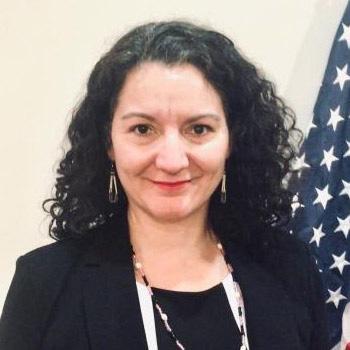
4 minute read
Traditional Healing Practices Key to Recovery From Long-term Effects of Colonization
Feelings of inferiority, hopelessness, self-sabotage, and selfdestructive behaviours are natural responses to the genocide and campaigns of assimilation that have been waged against them, and the deplorable conditions in which many are forced to live, says Alma Brooks, a Maliseet grandmother from the St. Mary’s First Nation in New Brunswick who is the East Elder of the Native Women’s Association of Canada (NWAC).
The result, Ms. Brooks told the International Summit of the Americas on Violence Against Indigenous Women, is frustration, anger, high rates of suicide, cancer, addiction, and imprisonment, along with hostile attitudes and resentment towards white people.
Advertisement
But, she and others told the Summit, there is a reawakening interest in traditional healing to help Indigenous women find the balance, harmony, and peace that has been missing from their lives.
“Traditional healing methods utilize ancient ceremony, story, songs, dance, teaching, sound frequencies, and other culturally significant tools that carry the elements of our genetic memory,” said Ms. Brooks, who works with NWAC’s Resiliency Lodge to provide counselling and support to Indigenous women.
Olga Montúfar Contreras, who is President of both the Indigenous Persons with Disabilities Global Network and the Fundación Paso a Paso, told the Summit that many Indigenous women prefer to access health care based on traditional medicine, which has been handed down from generation to generation.
And Amanda Tascone Panchi, the Technical Co-ordinator of the Department of Gender and Women at the Indigenous Organization of Antioquia in Colombia, said her group employs an Indigenous psychologist and traditional healer to help Indigenous women maintain their soul and spirit.
“Traditional methodology has helped us move forward,” said Ms. Panchi. “We have worked closely with plants, and elders have led this transformation.”
Patrisia Gonzales, Promotora of Indigenous Medicine and Herbalist in the Department of Mexican American Studies at the University of Arizona, is the granddaughter of Kickapoo, Comanche, and Macehual peoples, and specializes in Indigenous ways of knowing and Indigenous medicine.
“For the last 25 years,” Dr. Gonzales told the Summit, “I've done traditional clinics, I've done traditional treatments at powwows with survivors of torture and violence, peace bearers and peace gatherings.” And she has held traditional clinics in collaboration with centres for domestic violence.
Dr. Gonzales said she helped to launch a promotora project in Albuquerque in which Nahua elders gave their permission for her group to build a ceremonial sweat lodge, based on the Nahua tradition, that incorporated traditional medicine. That led to other sweat lodges in which healing comes through plants as well as treatment that looks like massage but is actually a form of ceremony connecting the recipient to their light and the sun.
That evolved into a clinic where there is a healing room in which elders and health promoters offer traditional treatment. And that eventually grew into an annual medicine gathering.
“We had to re-teach ourselves and reconnect each other to what our grandparents had taught us,” said Dr. Gonzales. “We came together to share what we knew because the power of our hands is why we were persecuted as Indigenous Peoples. Not only for our plant knowledge and our connection to our ceremonies, but the very power that connected us to our ability to heal ourselves and others was through our own bodies. And so, we really have reclaimed that power.”
As a professor, she said, she was able to get a grant to research Indigenous critical thinking circles that are intended for the prevention of gender violence.
“We call them sage circles,” said Dr. Gonzales. “We're talking and sharing stories and we're thinking about how to strengthen our self-determination as that cultural shield. We drink our medicines, do our storytelling, and create a network to respond to violence against Indigenous Peoples, with a particular focus on female-identified peoples but knowing also that we include all our community in that solution.”
When Indigenous languages are analyzed, she said, it becomes clear that Indigenous Peoples are connecting to their stars, to the sun, and to the body and its relationship to the water within it, and the water of the land.
“We're healing the land and the water when we're healing our bodies, and we're connecting back to the stars in the sky world, and all of the unseen processes that are in place, that we experience through our ceremonies,” she said. “Our ceremonies are more powerful than colonization and, when our ceremonies work, we heal and we undo the past and we undo the trauma.”
In Canada, NWAC’s Resiliency Lodges are places where Indigenous women can gather to provide and receive traditional healing programs, as well as take part in support groups and opportunities to recharge.
Ms. Brooks said this corresponds with what the ancestors have always known and what science is now corroborating—that “all life is connected and that ancestral memory is transmitted epigenetically from one generation to the next.”
What that means, she said, is, that memory is inherited biologically and meaningful information can be passed that way from generation to generation. But science is also verifying that intergenerational trauma can be genetically transmitted from one generation to the next, and that has significant implications for Indigenous women who are healing from the violence that has been perpetrated against them, said Ms. Brooks.
“Traditional indigenous societies had methods of healing those traumas built into their way of life,” she said.
“Harmony and balance within and among the extended family was fundamentally important for the survival of the people. … Traditional healing practices are key to recovery from the long-term effects of colonization.”
- SAID ALMA BROOKS









